About SMOS+ SOS
SMOS (Soil Moisture and Ocean Salinity)

Known as ESA’s water mission, the Soil Moisture and Ocean Salinity (SMOS) satellite makes global observations of soil moisture over land and sea-surface salinity over the oceans to improve our understanding of the water cycle. Data from SMOS is important for weather and climate modelling, water resource management, agriculture and also contribute to the forecasting of hazardous events such as floods.
SMOS+Surface Ocean salinity (SOS)
SMOS+SOS is a project funded under the ESA STSE (Support to Science Element) programme to demonstrate the performance and scientific value of SMOS Sea Surface Salinity (SSS) products through five well-defined case studies (CS). With SMOS measuring the SSS in the top centimetre of the ocean, validating SMOS against in situ salinity data taken typically at a few metres depth introduces assumptions about the vertical structure of salinity in the upper ocean. To address these issues, the project will examine and quantify discrepancies between SMOS and in situ surface salinity data at various depths in different regions characterised by strong precipitation or evaporation regimes.
There is a list of SMOS+SOS peer reviewed publications.
Example case study – Amazon plumes

The Amazon river discharges about 16% of global freshwater run-off resulting in a large surface plume typically 3m to 20m deep. It is a very dynamic ocean region with strong gradients, and has been well studied using in situ and earth observation sensors. This case study will analyse the seasonal cycle and interannual variability of the freshwater plume signals in SMOS and complementary data sources.







